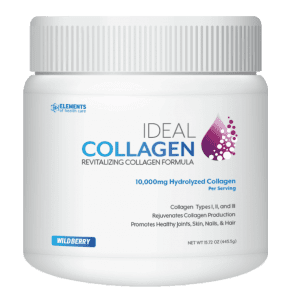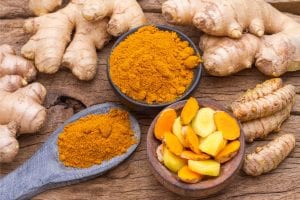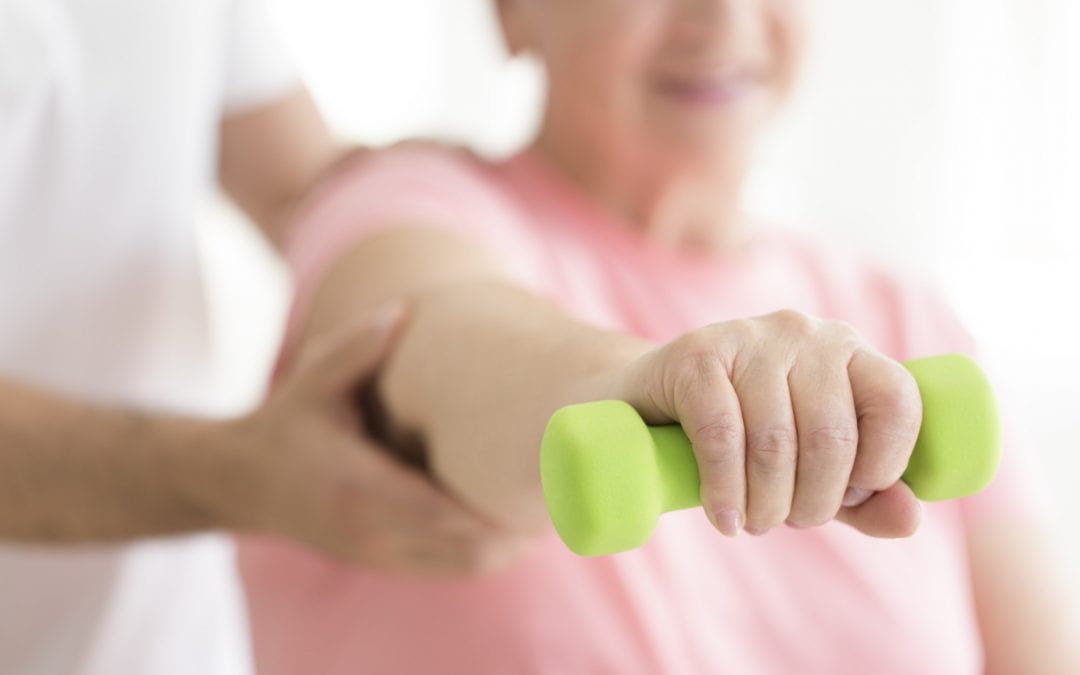Having joint pain slows you down. We get it. You want to keep moving and doing things you love. Improving your joint health is possible. Though some conditions are not in your control, there is so much that you can do to strengthen your joints. It comes down to what you do and what you take into your body. Here are some ideas to get you started on your journey to better joints:
Exercise
Don’t avoid exercise thinking that it will protect your joints. It’s important to exercise so you can strengthen your muscles around your joints and your bones (yes, they get a workout too!). If you experience joint pain, there are safe, low-impact exercises. Always talk with your doctor or physical therapist about what exercises might be best for you.
Strengthen muscles around the joints
Be sure not to put too much pressure on the joints as you do these strengthening exercises. Here are some common exercises and how to do them correctly:
- Squat: With your feet hip-width apart, sit back into a squat. Make sure your knees don’t extend over your ankles, your weight is in your heels, and that you keep your chest high. Strengthens knees and hips.
- Pushup: Begin in a plank position with hands shoulder-width apart. Lower your chest to the floor, then extend your arms and push back up to the plank position. To modify, start in a plank position with your knees on the floor. Keep your back strait through the process. Pushups will strengthen your shoulders and elbows.
Do low-impact exercises
 Swimming and water aerobics can be a great way to strengthen your joints without risking injury. Pushing through the water gently creates resistance, strengthening the muscles around your joints and throughout your body. It can also be relaxing and fun!
Swimming and water aerobics can be a great way to strengthen your joints without risking injury. Pushing through the water gently creates resistance, strengthening the muscles around your joints and throughout your body. It can also be relaxing and fun!
Cycling is another low-impact exercise, and strengthens your knees, hips, and ankles.
Exercise to improve flexibility and mobility
Conditions like arthritis decrease mobility. It’s important to keep your joints moving—make sure you are consistently bending, rotating, and moving your joints.
More ambitious exercises for flexibility include practices like yoga and Pilates. But classes at your local gym or online are available at different levels, from beginner to advanced.
Avoid injury
Doing low-impact exercises and doing certain moves in a safe way are a great start to avoiding injury. Here are other items to remember:
- Wear supportive shoes
- Don’t use weights that are too heavy for you
- Know your limits and increase intensity gradually
- Warm up before workouts and cool down and after workouts
- Stretch after your workout
- Strengthen muscles around the joints
- Pay attention to pain signals
Again, don’t just push through painful workouts. If you experience joint pain, talk with your healthcare professional about what exercises are best for you to do in your situation.
Supplements and Vitamins
Beyond exercise, there are certain vitamins and minerals that you can consume to support healthy joints. You can get these from your diet or make it easier by taking a supplement.
Collagen
 Collagen is a protein found in your muscles, skin, bones and joints. Type 2 Collagen is one of the main proteins in cartilage, making movement in your joints possible. Your body produces collagen naturally, but that production declines with age. So, your joint health declines.
Collagen is a protein found in your muscles, skin, bones and joints. Type 2 Collagen is one of the main proteins in cartilage, making movement in your joints possible. Your body produces collagen naturally, but that production declines with age. So, your joint health declines.
Collagen from your diet can be found in bone broth, meats, and eggs. But you can also take it as a supplement. In fact, hydrolyzed collagen (also called collagen peptides) is collagen that has been broken down to facilitate absorption. Ideal Collagen is a hydrolyzed collagen—flavorful and simple to include in your daily diet.
Glucosamine and Chondroitin
Glucosamine and chondroitin help make up your cartilage. They are produced by your body, but like collagen, that production decreases when you age. People take glucosamine and chondroitin to fortify their joints and protect against joint pain. Check out Elements of Healthcare’s Joint Health Support to see if glucosamine and chondroitin work for you.
Turmeric
 This spice does more than flavor your curry; it has proven a healing balm time and again. Turmeric has anti-inflammatory properties that help relieve pain, including in your joints.
This spice does more than flavor your curry; it has proven a healing balm time and again. Turmeric has anti-inflammatory properties that help relieve pain, including in your joints.
Boswellia extract
This comes from Boswellia trees, which (like turmeric) has been used for centuries to treat pain. Boswellia extract is an anti-inflammatory that has been known to increase the gap between joints.
Vitamin C
Vitamin C is needed for your body to produce collagen. Eat plenty of vitamin C-rich foods, such as broccoli, red bell peppers, citrus fruits, and leafy greens. Or, take vitamin C as a supplement. This will help your body have the collagen it needs to reduce joint pain.
Calcium
You’re probably not surprised to see this one on the list, as calcium is widely recognized as the bone-healthy vitamin. Low levels of calcium are associated with poor bone density and increased risk of fractures. Make sure you’re getting plenty of calcium—healthy bones help you have healthy joints. Eat low-fat dairy products, leafy vegetables, and calcium-fortified foods and drinks. The Institute of Medicine recommends a daily intake of 1,000 mg for men and women. Women over 50 and men over 70 should be taking 1,200 mg per day.
Vitamin D

Most people associate vitamin D with mood, but did you know that your body also needs vitamin D to absorb calcium? You get your vitamin D by being outside in the sun, but you can also find it in food, like fatty fish, eggs, meat, and fortified foods. Or you can take it as a supplement.
Omega-3 Fatty Acids
As another anti-inflammatory, omega-3 fatty acids are a great way to reduce joint pain and stiffness. Some research also shows that they seem to make anti-inflammatory drugs more effective. Omega-3s are found in fatty fish like salmon and mackerel, but its even easier to get the portions you need with a supplement (suggestions range 1 – 3 grams per day). Check out Elements of Healthcare’s Omega-3 Fish Oil and Krill Oil.
Lifestyle
Beyond exercise and diet, other lifestyle changes can help you prevent and reduce joint pain.
Maintain a Healthy Weight
Added weight can strain your joints. But by shedding excess weight, you can reduce joint pain. You will also reduce your risk for other conditions such as high blood pressure, heart disease, and diabetes.
Quit smoking
 You may not know that smoking hurts your bones and joints, but it’s true. Smoking has been consistently linked with poor bone density for decades. These may be direct or indirect factors, but the correlation is still there. Smoking increases your risk of osteoporosis, rheumatoid arthritis, fractures, injuries, and conditions involving bursitis or tendinitis. Seek help to quit smoking and eat a balanced diet, rich in calcium and vitamin D.
You may not know that smoking hurts your bones and joints, but it’s true. Smoking has been consistently linked with poor bone density for decades. These may be direct or indirect factors, but the correlation is still there. Smoking increases your risk of osteoporosis, rheumatoid arthritis, fractures, injuries, and conditions involving bursitis or tendinitis. Seek help to quit smoking and eat a balanced diet, rich in calcium and vitamin D.
Avoid excess alcohol
Research shows that excessive alcohol use is also correlated with an increase risk of fractures because alcohol interferes with the balance of calcium it the body. It also affects hormones that protect your bones and vitamins that your body needs to absorb calcium. Too much alcohol can also lead to falls and injuries. For better bones and joints, limit your alcohol intake.
The Bottom Line
Your joint health is affected by what you eat and what you do. Following these guidelines will help you strengthen your joints. And don’t forget to talk with your doctor about what path is the best for you when it comes to your joint health. For extra support, consider the following supplements by Elements of Healthcare:
- Joint Health Support: this combines glucosamine, chondroitin, turmeric, and other helpful ingredients to relieve joint pain and increase comfort
- Ideal Collagen: this hydrolyzed collagen is tasty, easily absorbed into your body, and works to strengthen joints, bones, and muscles
- Omega 3 Fish Oil and Krill Oil: these contain helpful omega-3 fatty acids that reduce inflammation in your joints

